1.
Mini (2001)
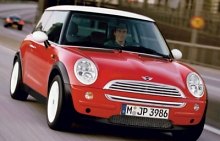 To reinvent an icon is never
easy. Volkswagen and Ford had little success with New Beetle and
Thunderbird respectively, but BMW and ex-Rover engineers hit the bull's
eye with the new Mini. Preserving much of the style of the classic
without compromising modern engineering requirements, the new Mini
delivered the desirability of premium cars like BMWs as well as the
driving fun you would expect for the true successor of the original
Mini. Its weakest link was the Chrysler-sourced Tritec engine, which
would be finally sorted in the second generation car. To reinvent an icon is never
easy. Volkswagen and Ford had little success with New Beetle and
Thunderbird respectively, but BMW and ex-Rover engineers hit the bull's
eye with the new Mini. Preserving much of the style of the classic
without compromising modern engineering requirements, the new Mini
delivered the desirability of premium cars like BMWs as well as the
driving fun you would expect for the true successor of the original
Mini. Its weakest link was the Chrysler-sourced Tritec engine, which
would be finally sorted in the second generation car.
|
2.
BMW M3 (E46) (2001)
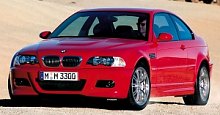 Probably the most all-round
performance car of the decade - four-people accommodation, day-to-day
usability, great performance, outstanding handling and driver
involvement and - how can you miss that - one of the best six-cylinder
engines ever made. High quality and tasteful style meant the keen
pricing exceptionally bargain. E46 M3 was the performance car for the
people. Probably the most all-round
performance car of the decade - four-people accommodation, day-to-day
usability, great performance, outstanding handling and driver
involvement and - how can you miss that - one of the best six-cylinder
engines ever made. High quality and tasteful style meant the keen
pricing exceptionally bargain. E46 M3 was the performance car for the
people.
|
3.
Mercedes SL (2001)
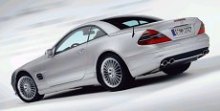 Few cars could be so timeless
and unchallenged during a 10-year life span. When new immitator Lexus
SC430 came to a crash and new challenger BMW 6-series failed to
impress, Mercedes SL still stood solidly at the top. With an advanced
retractable roof, active-body control and a couple of strong AMG
engines, especially the 202 mph-topping SL55 AMG, SL-class set a high
benchmark early on. Few cars could be so timeless
and unchallenged during a 10-year life span. When new immitator Lexus
SC430 came to a crash and new challenger BMW 6-series failed to
impress, Mercedes SL still stood solidly at the top. With an advanced
retractable roof, active-body control and a couple of strong AMG
engines, especially the 202 mph-topping SL55 AMG, SL-class set a high
benchmark early on.
|
4.
Volkswagen Golf Mk V (2003)
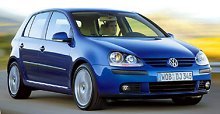 If the family hatch of last
decade was Ford Focus, the new title holder should be Volkswagen Golf
Mk V. Switching to multi-link suspension mostly clawed back the lost
ground in chassis dynamics. Furthermore, the VW excelled in ride
quality, refinement and build quality. New generation TFSI direct
injection turbo engines and DSG gearboxes marked it out from
competitors, offering superior fuel economy and tractability. If the family hatch of last
decade was Ford Focus, the new title holder should be Volkswagen Golf
Mk V. Switching to multi-link suspension mostly clawed back the lost
ground in chassis dynamics. Furthermore, the VW excelled in ride
quality, refinement and build quality. New generation TFSI direct
injection turbo engines and DSG gearboxes marked it out from
competitors, offering superior fuel economy and tractability.
|
5.
Toyota Prius Mk2 (2003)
 The first generation Prius was
more an experiment. The second incarnation finally matured into a
practical family car, offering real-world benefit in fuel economy
without much compromises in everything else - unless you are keen
drivers. While it never won our hearts, Prius Mk2 was undoubtedly
a milestone of hybrid technology. The first generation Prius was
more an experiment. The second incarnation finally matured into a
practical family car, offering real-world benefit in fuel economy
without much compromises in everything else - unless you are keen
drivers. While it never won our hearts, Prius Mk2 was undoubtedly
a milestone of hybrid technology.
|
6.
Mazda RX-8 (2003)
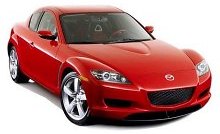 You have to admire the guts and
commitment Mazda made to its Wankel engine. RX-8 was not a pure sports
car, unlike the defunct RX-7, but it brought the joy of rotary
experience to broader audiences with four proper seats and lower costs.
The turbine-smooth engine was still thirsty and not torquey enough,
easily overshadowed by Nissan 350Z in straight line sprint. Handling,
however, was first class. Drove like a 4-door MX-5. You have to admire the guts and
commitment Mazda made to its Wankel engine. RX-8 was not a pure sports
car, unlike the defunct RX-7, but it brought the joy of rotary
experience to broader audiences with four proper seats and lower costs.
The turbine-smooth engine was still thirsty and not torquey enough,
easily overshadowed by Nissan 350Z in straight line sprint. Handling,
however, was first class. Drove like a 4-door MX-5.
|
7.
Porsche 911 GT3 (2003)
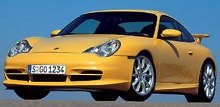 Probably the most engaging car
to drive regardless of price. The second generation GT3 was not only
quick in straight line, quick in corners but also delivered the
sharpest handling in the road car world. Fortunately, it also left
enough ride compliance for daily use. Probably the most engaging car
to drive regardless of price. The second generation GT3 was not only
quick in straight line, quick in corners but also delivered the
sharpest handling in the road car world. Fortunately, it also left
enough ride compliance for daily use.
|
8.
Chrysler 300 (2004)
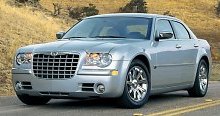 The most memorable American car
in the decade. In-your-face design followed the spirit of American. It
looked huge, but short overhangs and wide tracks meant the proportion
was actually very sporty. New HEMI V8 was the strength of the car, and
its fuel consumption was not as bad as imagine, thanks to cylinder
cut-off. 425hp SRT-8 was our choice for affordable performance sedan. The most memorable American car
in the decade. In-your-face design followed the spirit of American. It
looked huge, but short overhangs and wide tracks meant the proportion
was actually very sporty. New HEMI V8 was the strength of the car, and
its fuel consumption was not as bad as imagine, thanks to cylinder
cut-off. 425hp SRT-8 was our choice for affordable performance sedan.
|
9.
Maserati Quattroporte (2004)
 Forget AMG or M-cars, the
definitive performance saloon of the decade was the Italian Maserati
Quattroporte, a resurrected nameplate. Pininfarina styling combined
with Ferrari engineering and new-found quality control meant a
masterpiece. Unique architecture resulted in a slight rearward weight
bias, leading to very neutral handling and great steering. The
high-revving Ferrari V8 was not very powerful, but definitely soulful. Forget AMG or M-cars, the
definitive performance saloon of the decade was the Italian Maserati
Quattroporte, a resurrected nameplate. Pininfarina styling combined
with Ferrari engineering and new-found quality control meant a
masterpiece. Unique architecture resulted in a slight rearward weight
bias, leading to very neutral handling and great steering. The
high-revving Ferrari V8 was not very powerful, but definitely soulful.
|
10.
Bugatti Veyron EB16.4 (2005)
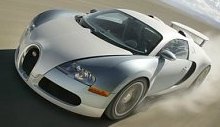 The Bug was easily the fastest,
the most powerful and most sophisticated car of the decade. Boosting
1001 horses and a 253 mph top speed, 0-60 mph taking 2.5 seconds, it
surpassed the long-standing records of McLaren F1. Unlike the
record-breaking attempts by some largely unknown manufacturers, the
Bugatti
was impeccably engineered and built. Its 4-wheel drive system, adaptive
suspensions, twin-clutch gearbox and quad-turbo W12 engine were all
engineering masterpieces. It was a statement of what Volkswagen group -
and its chairman Ferdinand Piech - could achieve. The Bug was easily the fastest,
the most powerful and most sophisticated car of the decade. Boosting
1001 horses and a 253 mph top speed, 0-60 mph taking 2.5 seconds, it
surpassed the long-standing records of McLaren F1. Unlike the
record-breaking attempts by some largely unknown manufacturers, the
Bugatti
was impeccably engineered and built. Its 4-wheel drive system, adaptive
suspensions, twin-clutch gearbox and quad-turbo W12 engine were all
engineering masterpieces. It was a statement of what Volkswagen group -
and its chairman Ferdinand Piech - could achieve.
|
11.
Ferrari 599GTB (2006)
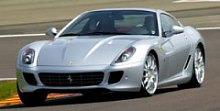 599 followed the principle set
by Enzo Ferrari, employing the classic FR layout and V12 engine. A well
balanced chassis, great handling and ride, marvellous engine,
super-sharp F1 gearbox and well-tuned traction control made it a great
GT as well as a great sports car. 599 followed the principle set
by Enzo Ferrari, employing the classic FR layout and V12 engine. A well
balanced chassis, great handling and ride, marvellous engine,
super-sharp F1 gearbox and well-tuned traction control made it a great
GT as well as a great sports car.
|
12.
Ford Mondeo (2007)
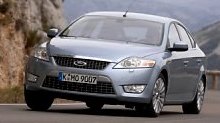 Much enlarged third generation
Mondeo gained a lot in style, space and build quality, while retaining
its superb handling. Volvo 5-pot turbocharged engine provides
motivation to the heavier car. The most accomplished family car for
those enjoy motoring. Much enlarged third generation
Mondeo gained a lot in style, space and build quality, while retaining
its superb handling. Volvo 5-pot turbocharged engine provides
motivation to the heavier car. The most accomplished family car for
those enjoy motoring.
|
13.
Nissan GT-R (2007)
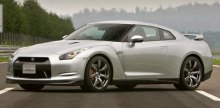 The original GT-R was one of
our last COTD winners. The new GT-R, despite having lost the Skyline
moniker, could be even greater. While the old car threatened the
naturally aspirated Porsche 911s, the new car had the flagship 911
Turbo beaten. The combination of twin-turbo V6, a clever all-wheel
drive and twin-clutch transaxle resulted in supercar level of
performance and a new Nurburgring lap record. It was one of the fastest
cars in real world regardless of price. The original GT-R was one of
our last COTD winners. The new GT-R, despite having lost the Skyline
moniker, could be even greater. While the old car threatened the
naturally aspirated Porsche 911s, the new car had the flagship 911
Turbo beaten. The combination of twin-turbo V6, a clever all-wheel
drive and twin-clutch transaxle resulted in supercar level of
performance and a new Nurburgring lap record. It was one of the fastest
cars in real world regardless of price.
|
14.
Audi R8 (2007)
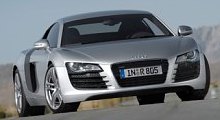 It's not the fastest car of its
class, but Audi R8 was a truly everyday sportscar. It had none of the
temper of Porsche or Ferrari. 4-wheel traction ensured all-weather
security. Controls were lightweight and refined. There was also vast
of space for occupants and luggages. In short, it was no more difficult
to drive than a family hatch. Most important, the R8 was great to look
and
to drive, unlike most other fast Audis. A modern day
Honda NSX. It's not the fastest car of its
class, but Audi R8 was a truly everyday sportscar. It had none of the
temper of Porsche or Ferrari. 4-wheel traction ensured all-weather
security. Controls were lightweight and refined. There was also vast
of space for occupants and luggages. In short, it was no more difficult
to drive than a family hatch. Most important, the R8 was great to look
and
to drive, unlike most other fast Audis. A modern day
Honda NSX.
|
15.
Ferrari 430 Scuderia (2007)
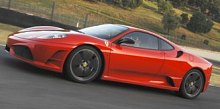 430 Scuderia, a development
from F430, offered probably the most thrilling driving experience among
all cars made in the decade. Engine, gearbox, handling, brakes... all
were the sharpest among rivals. Many saw it as a road-going race car,
but at the same time its ride was actually more forgiving than F430.
Excellent electronics integration (traction control, ABS, E-diff etc.)
successfully tamed the evil side of it. 430 Scuderia, a development
from F430, offered probably the most thrilling driving experience among
all cars made in the decade. Engine, gearbox, handling, brakes... all
were the sharpest among rivals. Many saw it as a road-going race car,
but at the same time its ride was actually more forgiving than F430.
Excellent electronics integration (traction control, ABS, E-diff etc.)
successfully tamed the evil side of it.
|
16.
Tata Nano (2008)
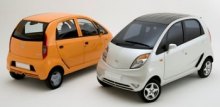 Ratan Tata dreamed of putting
Indian people on wheels like what Henry Ford did a century ago. The
result was Nano, the cheapest car in the world by far. Don't think it
must be a crap. No, the Nano is cheap but not badly made. It saved all
unnecessary costs wisely without compromising the basic comfort and
safety. It even looked inspiring. Ratan Tata dreamed of putting
Indian people on wheels like what Henry Ford did a century ago. The
result was Nano, the cheapest car in the world by far. Don't think it
must be a crap. No, the Nano is cheap but not badly made. It saved all
unnecessary costs wisely without compromising the basic comfort and
safety. It even looked inspiring.
|
17.
Ferrari 458 Italia (2009)
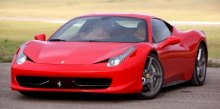 The last great sports car
of the decade went to Ferrari again. 458 Italia exceeded the
achievement of contemporary sports cars by some margin, no matter in
its engine efficiency, performance or driving thrill. Like all other
modern Ferraris, it is easy to live with too, thanks to magnetic
suspension, double-clutch gearbox and further development of electronic
driving aids. Back-to-basics styling reminded us the first Dino, but
now its performance is definitely in supercar league. The last great sports car
of the decade went to Ferrari again. 458 Italia exceeded the
achievement of contemporary sports cars by some margin, no matter in
its engine efficiency, performance or driving thrill. Like all other
modern Ferraris, it is easy to live with too, thanks to magnetic
suspension, double-clutch gearbox and further development of electronic
driving aids. Back-to-basics styling reminded us the first Dino, but
now its performance is definitely in supercar league.
|
















